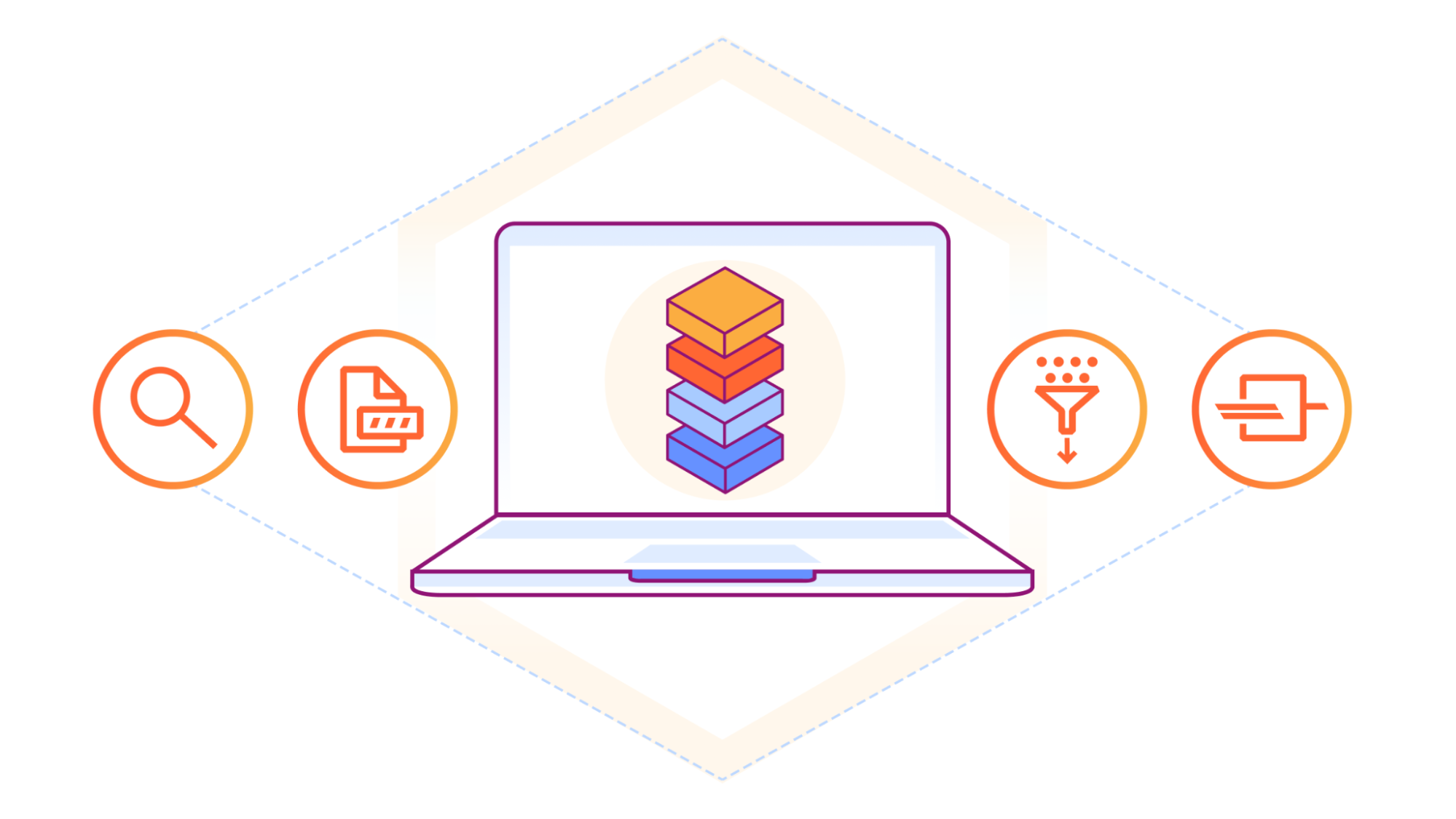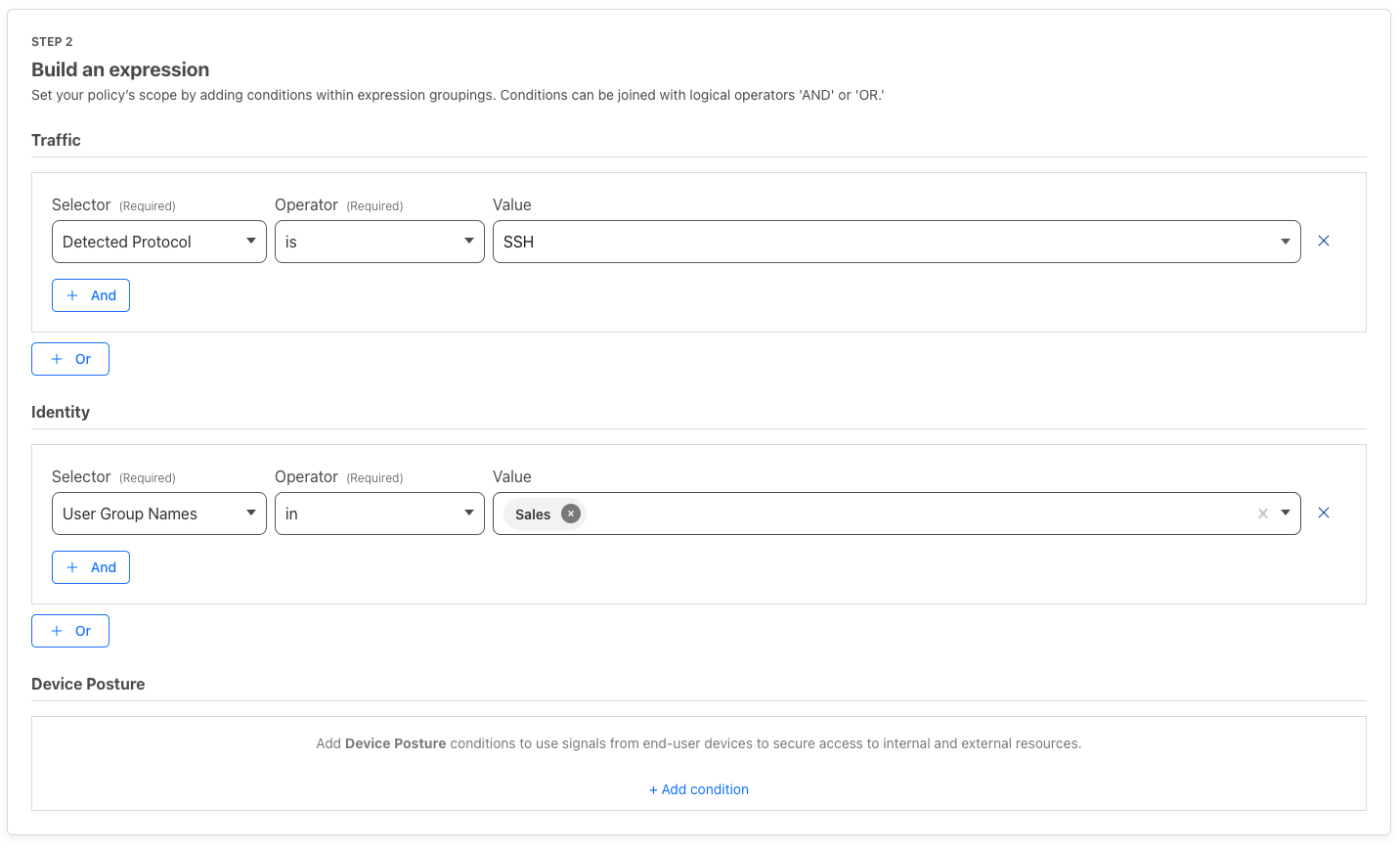03/08/2024
3 min read

Cloudflare Gateway, our secure web gateway (SWG), now supports the detection, logging, and filtering of network protocols regardless of their source or destination port. Protocol detection makes it easier to set precise policies without having to rely on the well known port and without the risk of over/under-filtering activity that could disrupt your users’ work. For example, you can filter all SSH traffic on your network by simply choosing the protocol.
Today, protocol detection is available to any Enterprise user of Gateway and supports a growing list of protocols including HTTP, HTTPS, SSH, TLS, DCE/RPC, MQTT, and TPKT.
Why is this needed?
As many configuration planes move to using RESTful APIs, and now even GraphQL, there is still a need to manage devices via protocols like SSH. Whether it is the only management protocol available on a new third party device, or one of the first ways we learned to connect to and manage a server, SSH is still extensively used.
With other legacy SWG and firewall tools, the process of blocking traffic by specifying only the well known port number (for example, port 22 for SSH) can be both insecure and inconvenient. For example, if you used SSH over any other port it would not be filtered properly, or if you tried using another protocol over a well known port, such as port 22, it would be blocked. An argument could also be made to lock down the destinations to only allow incoming connections over certain ports, but companies don’t often control their destination devices.
With so many steps, there are risks of over-blocking legitimate traffic, which potentially prevents users from reaching the resources they need to stay productive and leads to a large volume of support tickets for your administrators. Alternatively, you could underblock and miss out on filtering your intended traffic, creating security risks for your organization.
How we built it
To build a performant protocol detection and filtering capability we had to make sure it could be applied in the same place Gateway policies are being applied. To meet this requirement we added a new TCP socket pre-read hook to OXY, our Rust-based policy framework, to buffer the first few bytes of the data stream. This buffer, then, allows Gateway to compare the bytes to our protocol signature database and apply the correct next step. And since this is all built into OXY, if the policy is set to Block, the connection will be closed; if it’s set to Allow, the connection will be proxied or progressed to establish the TLS session.
How to set up Gateway protocol filtering
Cloudflare Gateway’s protocol detection simplifies this process by allowing you to specify the protocol within a Gateway Network policy. To get started navigate to the Settings section on the Zero Trust dashboard and then select the Network tile. Under the Firewall section you’ll see a toggle for protocol detection and once enabled you’ll be able to create network policies.

Next, go to the Firewall Policies section of your Zero Trust Gateway dashboard and then click ‘+ Add a policy’. There you can create a policy such as the one below to block SSH for all users within the Sales department.

This will prevent members of the sales team from initiating an outgoing or incoming SSH session.
Get started
Customers with a Cloudflare One Enterprise account will find this functionality in their Gateway dashboard today. We plan to make it available to Pay-as-you-go and Free customer accounts soon, as well as expanding the list of protocols.
If you’re interested in using protocol detection or ready to explore more broadly how Cloudflare can help you modernize your security, request a workshop or contact your account manager.
We protect entire corporate networks, help customers build Internet-scale applications efficiently, accelerate any website or Internet application, ward off DDoS attacks, keep hackers at bay, and can help you on your journey to Zero Trust.
Visit 1.1.1.1 from any device to get started with our free app that makes your Internet faster and safer.
To learn more about our mission to help build a better Internet, start here. If you're looking for a new career direction, check out our open positions.
